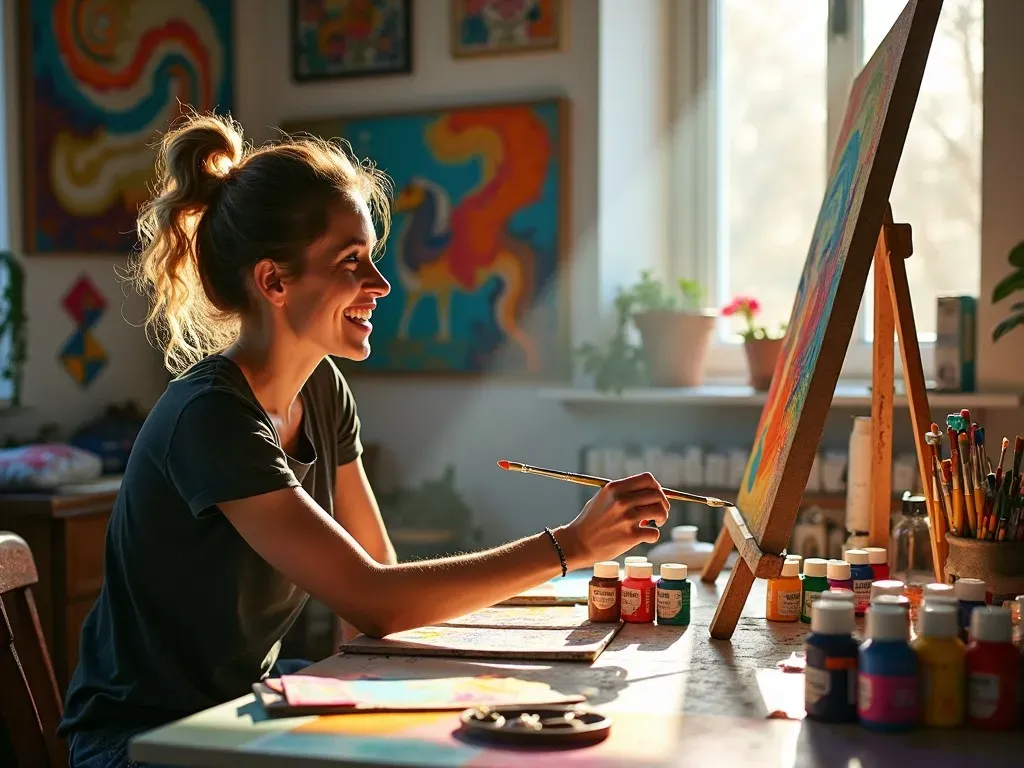Utrecht Oil Paint is renowned for its high quality and affordability, making it a favored choice among artists globally. Since its inception in 1949, Utrecht has been a benchmark in the realm of art supplies, particularly in the domain of oil colors. Whether you’re a budding painter or a seasoned professional, Utrecht oil colors promise an exceptional painting experience without breaking the bank.
Why Choose Utrecht Oil Colors?
Utrecht produces a remarkably diverse range of oil paints that are cherished for their vibrant hues, high pigment concentrations, and exceptional lightfastness. This quality allows artists to create stunning works that can withstand the test of time. Here’s a snapshot of what sets Utrecht oil paints apart:
- High Pigment Concentration: Utrecht ensures that each tube of paint is packed with pigments, giving artists brilliant and saturated colors.
- Affordable Pricing: Compared to other premium brands, Utrecht oil paints are priced more affordably, making them accessible for artists at any stage of their career.
- Exceptional Lightfastness: Many Utrecht colors boast a lightfastness rating of 1, ensuring longevity and resistance to fading.
Comparing Quality and Pricing
Here’s a table illustrating some of the standout features, pricing, and lightfastness ratings of Utrecht Oil Colors compared to other popular brands:
| Brand | Price (per 37ml) | Pigment Quality | Lightfastness Rating |
|---|---|---|---|
| Utrecht Artists | $6.52 | High | 1 |
| Winsor & Newton | $16.00 | Professional | 1-2 |
| Gamblin | $12.00 | Professional | 1 |
| Sennelier | $20.00 | Premium | 1 |
Product Lineup of Utrecht Oil Paint
Utrecht offers various lines of oil paint that cater to different artistic needs:
-
Utrecht Artists’ Oil Colors: These are professional-grade colors with high pigment loads. Perfect for serious artists, they offer superior coverage and tinting strength.
-
Utrecht Studio Series Oil Paints: Designed for students and hobbyists, this range provides excellent value without sacrificing quality. They are less expensive and great for learning Techniques and experimenting.
-
Sets and Assortments: Utrecht provides various sets that include popular color combinations, which are perfect for those just starting or looking to expand their palette affordably.
Proper Usage and Techniques
When using Utrecht oil paints, there are several techniques that can enhance your painting experience:
-
Mixing and Blending: Utilize a palette knife or brush for mixing colors to achieve desired shades and tones. The creamy consistency of Utrecht paints makes blending straightforward.
-
Layering: Because of their high lightfastness, you can layer paints effectively without fear of losing vibrancy over time.
-
Medium Combinations: Experiment with oil mediums to modify drying times, gloss, and consistency. Utrecht also offers a selection of mediums designed to work seamlessly with their oil colors.
Where to Buy Utrecht Oil Paints
Utrecht oil paintings can be found through several retailers. Below are some recommended sources:
-
BLICK Art Materials: Offers a wide selection of Utrecht oil colors and sets along with competitive pricing.
-
Utrecht Art Supplies: Their official site provides access to the entire product line, including exclusive deals and special offers.
-
Amazon: A variety of Utrecht oil paints are available with competitive pricing and quick shipping options.
FAQ
Q: Are Utrecht oil paints non-toxic?
A: While many of Utrecht’s colors are non-toxic, some pigments may contain cadmium or cobalt, which can be hazardous. It’s important to check individual paint labels for safety information.
Q: How do Utrecht oil paints compare to other brands?
A: Utrecht oil paints are often regarded as affordable yet high-quality, making them a go-to for many artists who value performance over price. Their vibrant colors and high pigment concentration set them apart.
Q: Can I use Utrecht oil colors for outdoor painting?
A: Yes, Utrecht oil paints can be used for outdoor painting; however, it’s crucial to ensure that they are properly sealed and protected once dry, especially in extreme weather conditions.
Q: What is the drying time for Utrecht oil paint?
A: The drying time for Utrecht oil paint varies depending on the thickness of the application and environmental conditions, but generally, they dry to the touch within 1-2 days.
Q: Do Utrecht oil paints work well with other brands?
A: Yes, Utrecht oil colors can be mixed and used alongside other brands. However, it is advisable to conduct a small test to ensure compatibility, especially when mixing different mediums.
Conclusion
Utrecht Oil Paints stand out as a reliable and affordable option for artists searching for high-performance oil colors. With their broad selection and exceptional quality, Utrecht continues to inspire creativity and artistic expression across the globe. Whether you’re a novice or a professional, adding Utrecht oil colors to your toolkit can undoubtedly elevate your painting practice.
